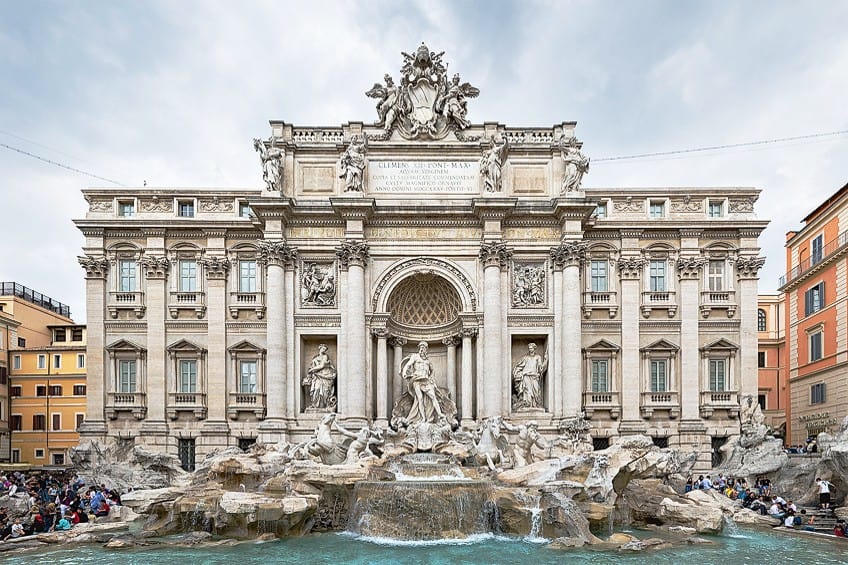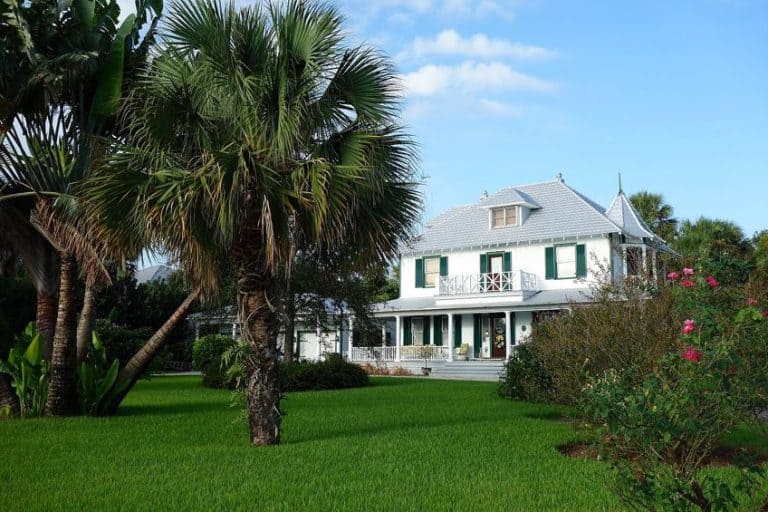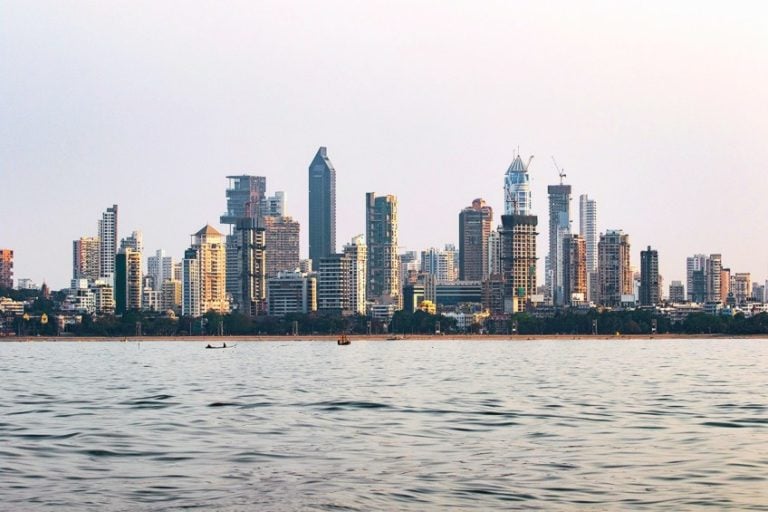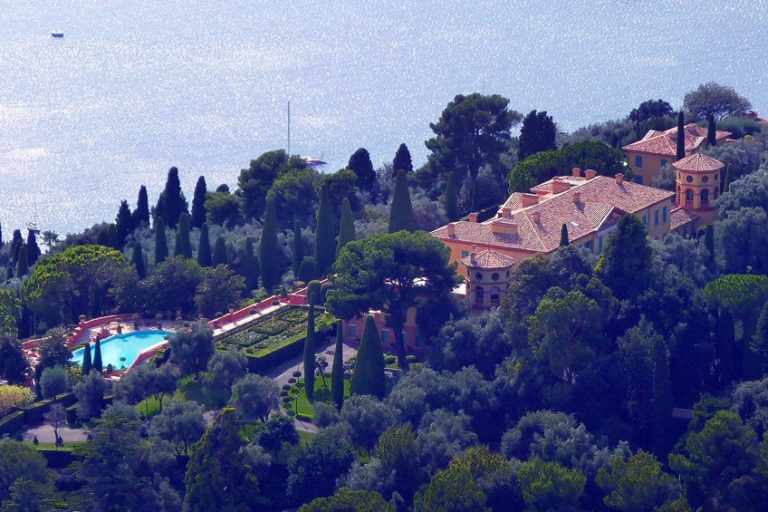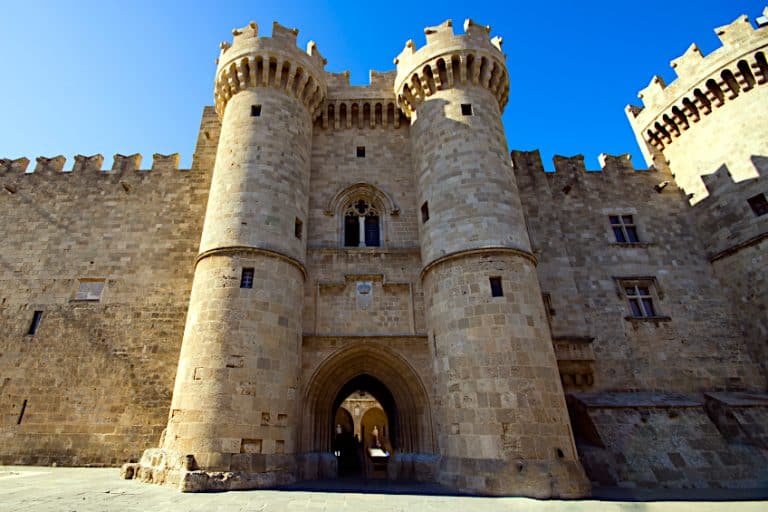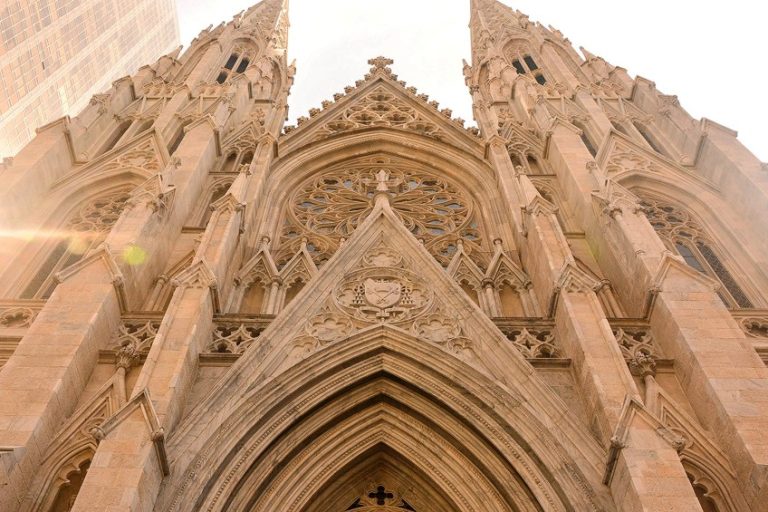Famous Fountains in Rome – The Most Famous Fountains in Italy
Rome’s fountains are world-renowned and there are literally thousands of them in the city! Some of the most famous fountains in Italy can be found in this historic city. But, what are the most famous fountains in Rome, and which of the ancient Roman fountains are still functioning today? Read further below, where we find out more about these famous Roman fountains!
A Look at the Most Famous Fountains in Rome
The Roman Empire has a long relationship with water, and Ancient Romans were excellent engineers capable of performing remarkable feats for their time. Water from the surrounding hills came to the city along carefully constructed aqueducts and was then contained in cisterns that produced an energy vacuum, causing the water to jet out of designated fountains around the city.
Rome’s fountains number around 2,000 in total, making it the city with more of these water features than anywhere else around the entire globe.
These famous fountains in Italy were produced over a long period and spanned several notable eras – from Ancient Roman fountains through the Renaissance and Baroque periods. Let’s explore the most famous fountains in Rome.
Fontana del Nettuno (1574) by Giacomo Della Porta
| Architect | Giacomo Della Porta (1532 – 1602) |
| Date | 1574 |
| Medium | Travertine and marble |
| Height (meters) | 6 |
| Location | Piazza Navona, Rome, Italy |
The reconstruction of Aqua Virgo, the Roman aqueduct, in 1570 was soon followed by the beginning of construction on a continuous water supply pipe towards the region of the ancient Campo Marzio, which was left as the city’s most densely inhabited section following the city’s decline in size and significance. The re-establishment of a piped water supply allowed for the building of several public fountains, such as this one.
Giacomo Della Porta, who also created the fountain on the opposite side of the Piazza, constructed the fountain’s basin in 1574, funded by Pope Gregory XIII.
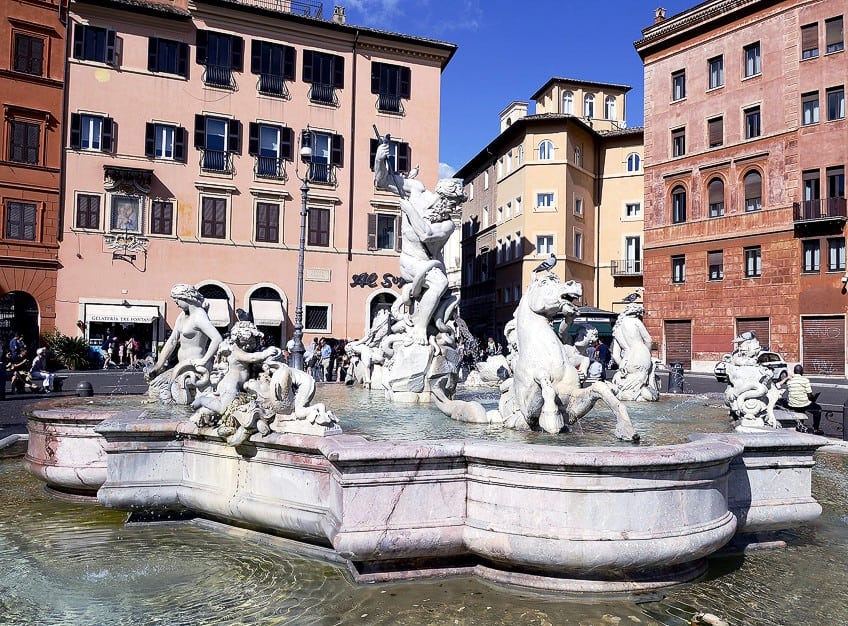
The lower section of the basin is made of white marble, while the upper part is made of Pietrasanta stone. The fountain endured without sculptures for the following 300 years. Infrastructure advances in the 19th century lessened reliance on urban fountains for drinking and bathing but enhanced their aesthetic and political significance. The existing fountain was completed by Antonio della Bitta in 1878, who added the towering sculpture of Neptune.
Fontana del Moro (1575) by Giacomo Della Porta
| Architect | Giacomo Della Porta (1532 – 1602) |
| Date | 1575 |
| Medium | Travertine and marble |
| Height (meters) | 3 |
| Location | Piazza Navona, Rome, Italy |
This famous fountain was constructed in the late 16th century by the Italian artist Giacomo della Porta, with subsequent embellishments by Bernini and others. The fountain is a big travertine stone basin with four masks in the corners through which water pours. A figure of a Moor sits in the center of the fountain, clutching a shell-shaped basin out of which water spouts into the basin beneath. The Moor is represented seated, with his arms outstretched. The Moor statue was installed in the early 17th century to replace an older triton statue that had been broken and removed.
The design of the Fontana del Moro is noteworthy because it mixes aspects of ancient Roman art with Renaissance style.
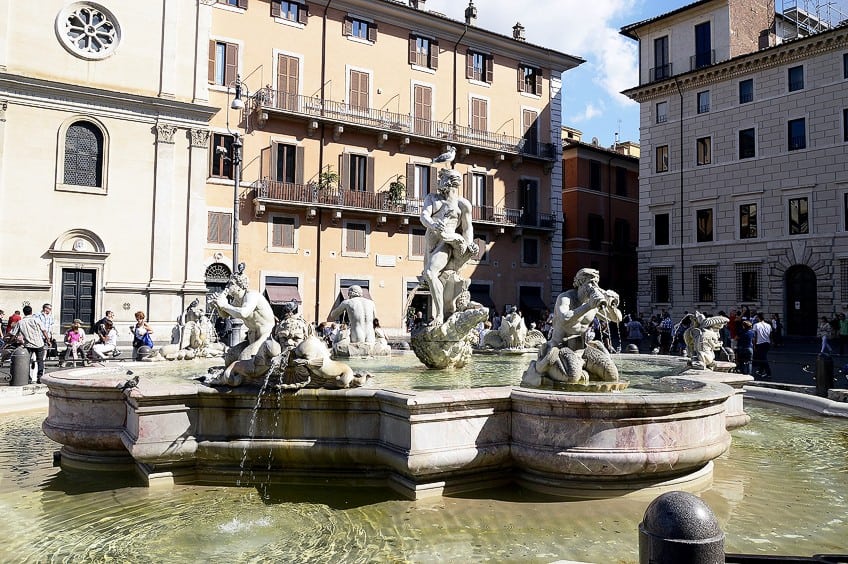
The travertine basin and masks are inspired by old Roman fountains, whereas the statue of the Moor is more characteristic of Renaissance-style art. The Fontana del Moro has been repaired and restored several times throughout the ages, including the installation of new plumbing and pumps to ensure that water continues flowing. The sculptures you see today are reproductions of the originals, which were relocated to the Galleria Borghese during a repair in 1874.
Fontana del Pantheon (1575) by Giacomo Della Porta
| Architect | Giacomo Della Porta (1532 – 1602) |
| Date | 1575 |
| Medium | Marble |
| Height (meters) | 6.5 |
| Location | Piazza della Rotonda, Rome, Italy |
Fontana del Pantheon, located in the heart of Piazza della Rotonda, is framed by one of Rome’s most famous tourist attractions: the Pantheon. Giacomo della Porta created the fountain in 1575 on the order of Pope Gregory XIII. Leonardo Sormani was the one who brought Giacomo Della Porta’s concept to life, sculpting the fountain and its original statues. The old marble basin and statues were eventually dismantled.
The first improvements were made in 1711, under Pope Clement XI, who decided to modernize the 16th-century fountain by placing a 6-meter-tall obelisk of Ramses II in the middle of the structure, placed atop a travertine rock, encircled at the foot by four masks and four dolphins supported by a plinth.
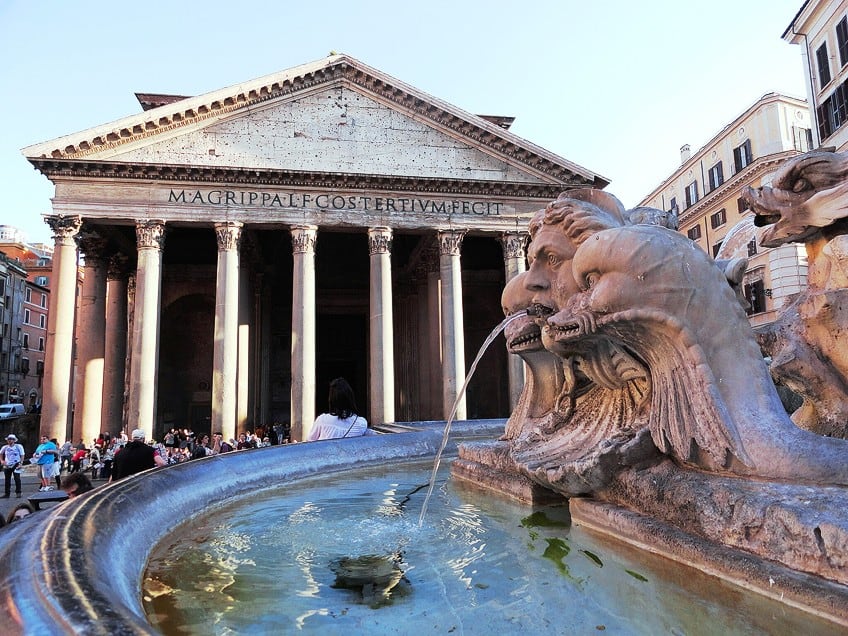
Filippo Barignoni was the appointed architect, and he also revised the basin, which was subsequently cut from stone rather than marble. Filippo Barignoni apparently got inspiration from reworking the construction of Fontana del Pantheon in the formerly erected Fontana dei Quattro Fiumi in Piazza Navona, one of Gian Lorenzo Bernini’s major masterpieces. The fountain’s original sculpture was relocated to the Museum of Rome in 1886, when the final renovations were made. The originals were replaced with reproductions carved by Luigi Amici, including the masks and dolphins from which water erupts.
Fontana dell’Acqua Felice (1588) by Domenico Fontana
| Architect | Domenico Fontana (1543 – 1607) |
| Date | 1588 |
| Medium | Marble |
| Height (meters) | Unspecified |
| Location | Quirinale District, Rome, Italy |
The opening of this aqueduct, completed in the 1580s, was a momentous occasion because it was the first new aqueduct built in Rome in many centuries. To commemorate this occasion, a massive fountain depicting a Roman triumphal arch was built. At the top of the fountain is a big inscription honoring Sixtus V, while the lower part is made up of three arches. Little statues adorn the two lateral arches, while a massive figure of Moses dominates the center one.
The Pope, who supplied water to Rome via the new aqueduct, is likened to the legendary biblical character in this passage.

The Moses statue has been extensively criticized over time for a variety of reasons. The proportions were regarded as inaccurate, and others questioned the design of Moses, as well as the scale of the monument. Yet, the fountain served a political purpose: it demonstrated how the Catholic Church, as opposed to the Protestant Reformation, served the needs of the people of Rome. It also provided the societal goals of revitalizing the Quirinal neighborhood, transforming it from a rural region of villas to a vibrant urban neighborhood with the introduction of a good drinking water supply.
Fontana delle Tartarughe (1588) by Taddeo Landini
| Architect | Taddeo Landini (1561 – 1596) |
| Date | 1588 |
| Medium | Bronze |
| Height (meters) | Unspecified |
| Location | Piazza Mattei, Rome, Italy |
This is one of the very few fountains in Rome erected for a private patron rather than a Pope. Muzio Mattei was a member of the House of Mattei, a politician and banker whose predecessors included Pope Innocent II and traced back to an early Roman family, the Papareschi. It was sculpted by the artist Taddeo Landini in 1588. When the fountain was rebuilt 70 years later, the bronze turtles peeking over the top basin were installed.
The turtles were apparently too tempting for thieves, therefore the original versions are stored at the Capitoline Museums. They were meant to be constructed of marble but were instead fashioned of bronze, which was more valuable.

The fountain is made out of a square basin with a circular Vasque of African marble in the center placed on a pedestal. The four putti heads that pour water into the basin beneath are located around the perimeter of the Vasque. The fountain’s base is surrounded by four marble conch shells. The fountain was critically praised by many. Girolamo Ferrucci, a writer, described it as “the most magnificent and exquisite fountain in Rome” in 1588.
Fontana dell’Acqua Paola (1612) by Giovanni Fontana
| Architect | Giovanni Fontana (1540 – 1614) |
| Date | 1612 |
| Medium | Marble |
| Height (meters) | Unspecified |
| Location | Janiculum Hill, Rome, Italy |
Giovanni Fontana, whose brother worked on the Flaminio Ponzio designed the fountain. He utilized white marble from the neighboring ruins of the Roman Temple of Minerva to build a huge five-arched gateway to welcome the water. The papal tiara and keys lie at the fountain’s apex, above the coat of arms of the Borghese family – an eagle and a serpent supported by angels. In lyrical language, the inscription thanks Pope Paul for giving water to the citizens of the neighborhood.
The Fontana dell’Acqua Paola’s subject is water. Five flowing streams streamed through the arches and into five basins.
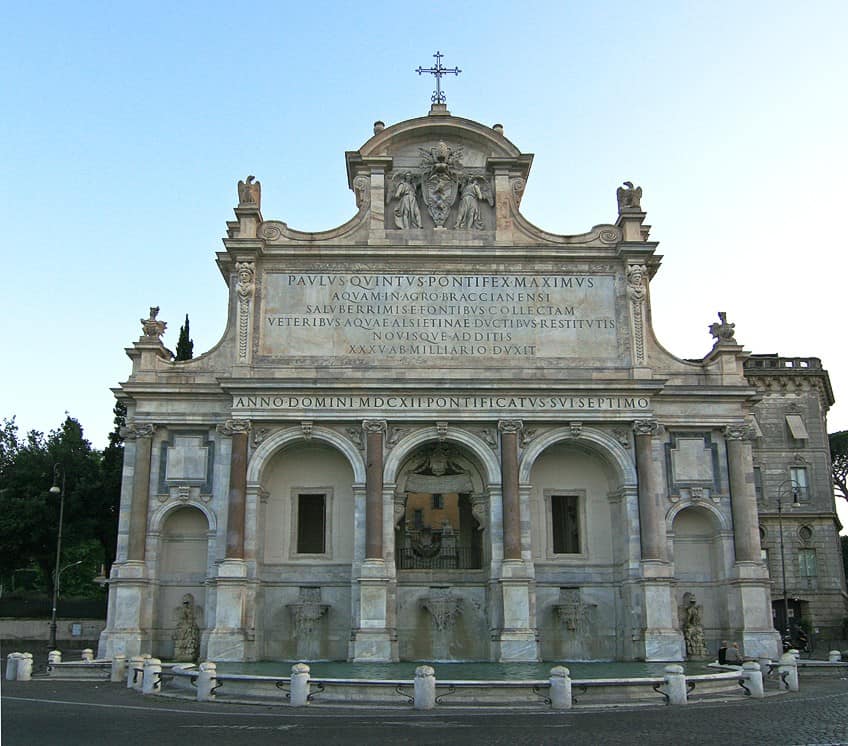
Carlo Fontana constructed an extra semicircular pool in 1690 to catch the water that poured from the marble basins. Marble pillars were erected to prevent coachmen from refreshing their horses in the fountain, but the pool enticed many local inhabitants, who bathed in it. In 1707, an ordinance was passed prohibiting citizens from bathing in the fountain.
Fontana Della Barcaccia (1629) by Pietro Bernini
| Architect | Pietro Bernini (1562 – 1629) |
| Date | 1629 |
| Medium | Marble |
| Height (meters) | Unspecified |
| Location | Piazza di Spagna, Rome, Italy |
According to local legend, when the River flooded in 1598, a boat was swept into the Piazza di Spagna. After the water retreated, the boat was positioned in the middle of the plaza, and it was this incident that prompted Bernini’s sculpture. As a reflection of Pope Urban VIII’s lineage, the fountain is adorned with the Barberini family’s coat of arms.
On the 15th of May, 2007, four inebriated tourists used a huge screwdriver to damage the majestic fountain, causing a sizable chunk of the papal coat of arms to detach.
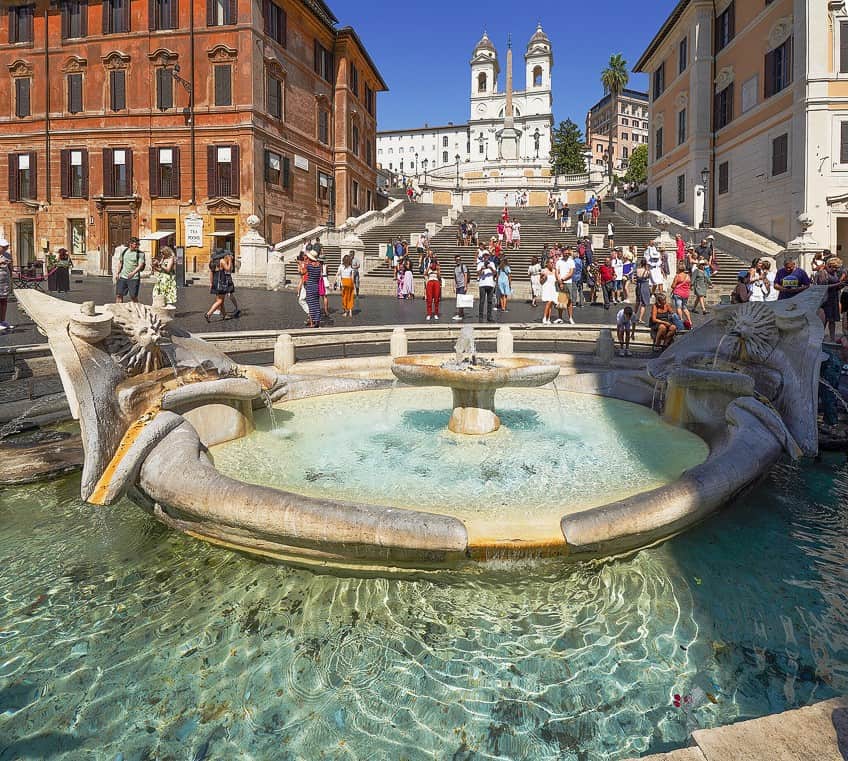
The sculptural fountain is shaped like a half-sunken boat, with water pouring from its sides into a tiny basin. The water originates from the Acqua Vergine, a 19th-century aqueduct. Because of the low water pressure from the aqueduct, Bernini designed this fountain to be somewhat below street level. Water slowly flows from seven points on the fountain, producing a wonderfully relaxing sound. On his deathbed, the English poet John Keats described hearing the calming sound of the fountain’s water flowing.
Fontana del Tritone (1643) by Gian Lorenzo Bernini
| Architect | Gian Lorenzo Bernini (1598 – 1680) |
| Date | 1643 |
| Medium | Travertine |
| Height (meters) | Unspecified |
| Location | Piazza Barberini, Rome, Italy |
This was Gian Lorenzo Bernini’s first free-standing fountain, built to primarily provide water from one of Rome’s aqueducts, Acqua Felice. This was Bernini’s final major commission from Pope Urban VIII, who passed in 1644. Bernini and Urban introduced the sculptural fountain concept, familiar from villa gardens, to a public urban environment for the first time with this fountain. Formerly, public fountains in Rome were passive basins used for public water reception.
At the center of the fountain stands a larger-than-life Triton, a minor ancient Greco-Roman mythical sea god represented as a merman kneeling on the sum of four dolphin tail fins.
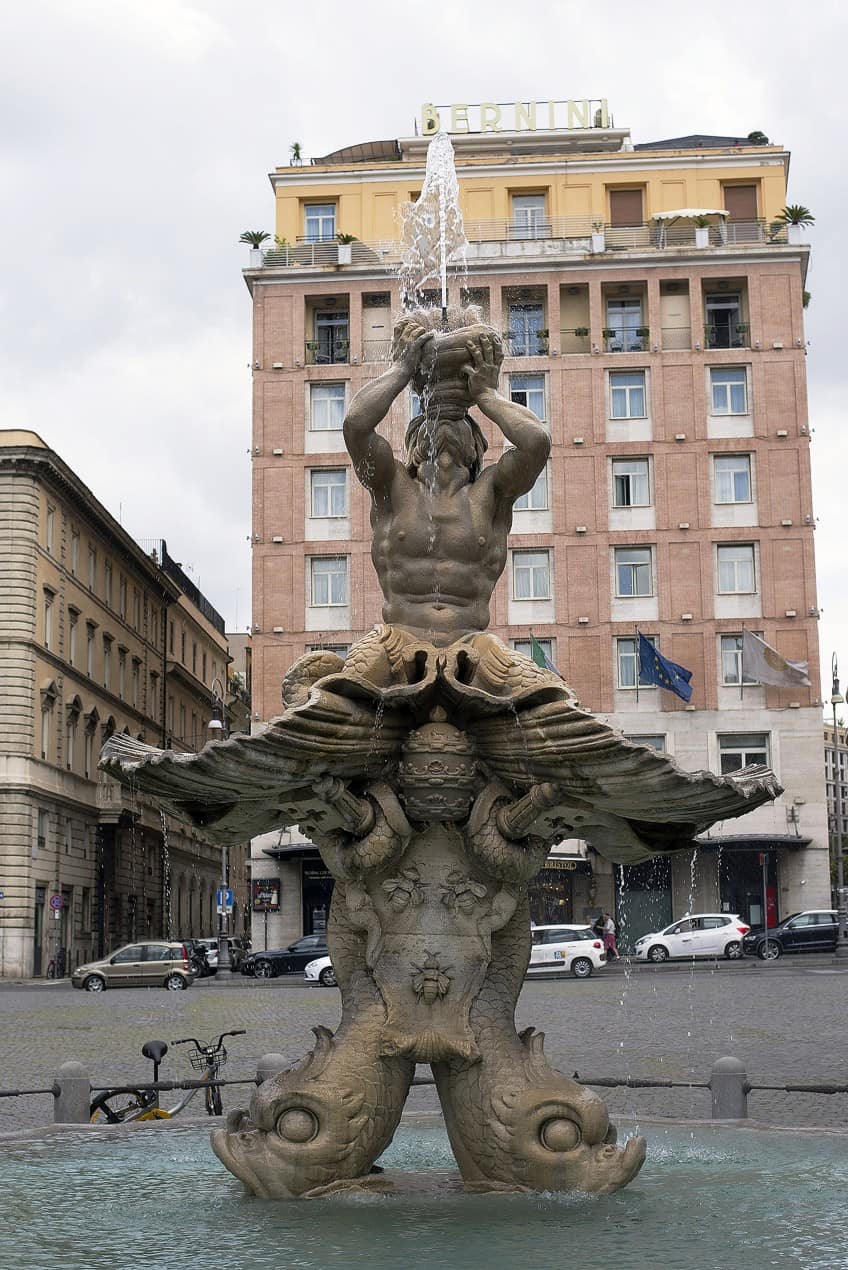
Triton’s arms hoist a conch to his lips, and his head is depicted flung back. A jet of water regularly shoots out from the conch, which used to rise substantially higher than it does now. Photos and drawings from the 19th century indicate buildings that were considerably lower surrounding the square, which would have made this fountain more striking at the time of its construction. Nonetheless, it is a testament to Bernini’s aesthetic judgment that the fountain can still retain a powerful presence even nowadays, with tall buildings visible around the traffic-clogged square.
Fontana dei Quattro Fiumi (1651) by Gian Lorenzo Bernini
| Architect | Gian Lorenzo Bernini (1598 – 1680) |
| Date | 1651 |
| Medium | Travertine and marble |
| Height (meters) | 30 |
| Location | Piazza Navona, Rome, Italy |
The river gods appear to be frozen in motion as they sustain the obelisk in this famous fountain’s dynamic and powerful arrangement. It is regarded as one of the best examples of Baroque sculpture in a fountain and has become one of Rome’s most recognizable landmarks. The fountain is made up of four gods, each symbolizing one of the four continents and their associated rivers known at the time: Europe’s Danube, Africa’s Nile, Asia’s Ganges, and America’s Rio de la Plata.
Each river deity is represented with distinct qualities and attributes that symbolize their home continent, like the Nile’s palm tree and crocodile.
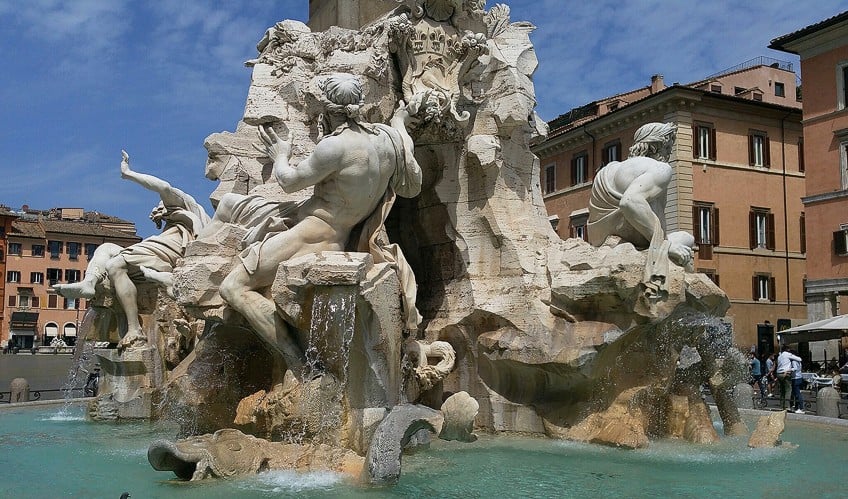
The fountain is centered around an Egyptian obelisk that was initially positioned in the Circus of Maxentius and was subsequently relocated to its current site by Bernini as an element of his fountain design. The obelisk is crowned by a bronze dove, which represents the Holy Spirit. Gian Lorenzo Bernini, the renowned Italian sculptor, and architect designed it in the mid-17th century.
Trevi Fountain (1762) by Nicola Salvi
| Architect | Nicola Salvi (1697 – 1751) |
| Date | 1762 |
| Medium | Travertine and Carrara marble |
| Height (meters) | 26 |
| Location | Piazza di Trevi, Rome, Italy |
The Trevi Fountain is an iconic landmark in the city, towering 26 meters tall, 49 meters broad, and elaborately ornamented in the Baroque style. It was constructed on top of a historic water spring and has recently undergone a comprehensive renovation and cleanup. Though very basic in construction, Rome is famed for its hundreds of ‘nose-shaped’ fountains with continually running water. The city’s aristocracy typically employed aesthetic techniques to display Rome’s cultural refinement, and the Trevi Fountain is no exception.
While a fountain had been at the Trevi Fountain location since antiquity, it wasn’t until 1629, when Pope Urban VIII appointed Gian Lorenzo Bernini to design improvements, that the fountain started to acquire its modern appearance.

The project was shelved when the Pope died, however, some of Bernini’s proposals were adopted into designs a hundred years later. Pope Clement XII organized a competition to remodel the fountain in 1730, and the project was eventually given to Nicola Salvi, a local architect. Construction commenced in 1732 under Salvi’s supervision and was finished in 1762 by Giuseppe Pannini following Salvi’s death in 1751. The Palazzo Poli provides a striking background for the Trevi Fountain. The aesthetic subject of the fountain’s marble statues is the taming of the waters.
Water has a historic and mythical link with Rome, the eternal city. Furthermore, the ancient Romans saw water as a gift from the gods and devised several methods to exploit its power. Not only is Ancient Rome famous for its huge network of aqueducts, but also for its advances in cleanliness. The Roman baths were a location to mingle, as well as get clean. Above everything else, these magnificent fountains served their community as a source of pure water, as well as resting and socializing areas.
Take a look at our fountains in Rome webstory here!
Frequently Asked Questions
How Did Famous Fountains in Rome Get Their Water?
Fountains in ancient Rome were supplied with water via an aqueduct network that transported water from far-off sources to the city. The aqueducts were engineering marvels, with a system of stone arches and canals carrying water over enormous distances, frequently across valleys and hills. Fountains were sometimes fed with water from nearby wells and springs. In periods of severe drought or in cases where the local supply was insufficient, these resources were regularly supplemented by aqueducts.
How Did Water Pump the Ancient Roman Fountains?
The fountains in Rome functioned only on gravity; the water supply must be higher than the fountain. The height of the water in the fountain was governed by the distance between the source of water and the elevation. Currently, all of Rome’s fountains have been restored, with both gravitational force and pumps used, and the water in the fountains is even recycled!
Justin van Huyssteen is a freelance writer, novelist, and academic originally from Cape Town, South Africa. At present, he has a bachelor’s degree in English and literary theory and an honor’s degree in literary theory. He is currently working towards his master’s degree in literary theory with a focus on animal studies, critical theory, and semiotics within literature. As a novelist and freelancer, he often writes under the pen name L.C. Lupus.
Justin’s preferred literary movements include modern and postmodern literature with literary fiction and genre fiction like sci-fi, post-apocalyptic, and horror being of particular interest. His academia extends to his interest in prose and narratology. He enjoys analyzing a variety of mediums through a literary lens, such as graphic novels, film, and video games.
Justin is working for artincontext.org as an author and content writer since 2022. He is responsible for all blog posts about architecture, literature and poetry.
Learn more about Justin van Huyssteen and the Art in Context Team.
Cite this Article
Justin, van Huyssteen, “Famous Fountains in Rome – The Most Famous Fountains in Italy.” Art in Context. May 29, 2023. URL: https://artincontext.org/famous-fountains-in-rome/
van Huyssteen, J. (2023, 29 May). Famous Fountains in Rome – The Most Famous Fountains in Italy. Art in Context. https://artincontext.org/famous-fountains-in-rome/
van Huyssteen, Justin. “Famous Fountains in Rome – The Most Famous Fountains in Italy.” Art in Context, May 29, 2023. https://artincontext.org/famous-fountains-in-rome/.


